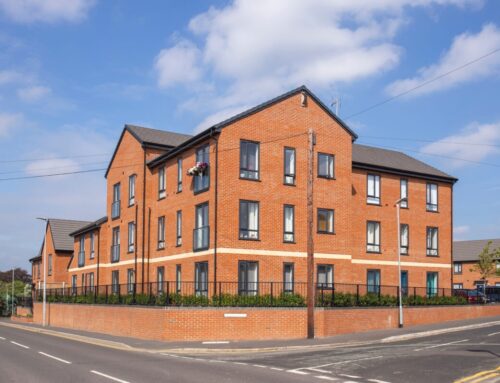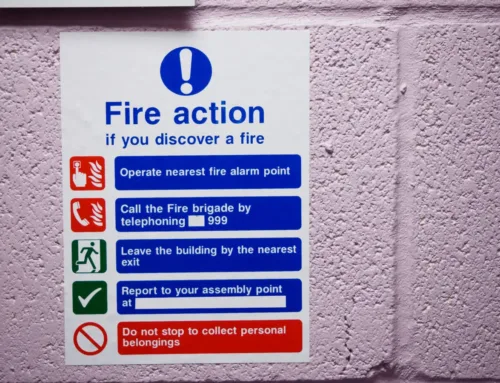The team at Block in a Box look at underinsurance and the risks it can bring for Residents’ Management Company Directors.
For Residents’ Management Company (RMC) Directors, insurance is of upmost importance. It’s your responsibility to ensure that your leaseholders’ finances and investments are safe in the event of damage, and that means choosing an accurate, full coverage policy that will pay out correctly should the worst happen.
Either in the hope of reducing insurance premiums or through a lack of due diligence, some RMC Directors can find themselves underinsured. Here we want to discuss how that happens, how to avoid it and what the consequences could be in the worst-case scenario.
What is Underinsurance?
In a nutshell, underinsurance is the result of an inadequate Sum Insured (the maximum amount of money your insurer will be willing to pay out to rebuild your property from the ground up to its current design and to current specs should the very worst happen).
This can lead to a lack of protection and, depending on where the mistakes have been made, could result in claims not being paid out at all or for substantially less than expected.
Underinsurance is often the result of the incorrect assumption that the entirety of the property is covered by a policy, or it boils down to an inaccurate or out of date Reinstatement Cost Assessment (leading to an inaccurate Sum Insured).
When a property is underinsured and a claim arises, those claims may be subject to an average, meaning that any pay-out will be reduced proportionately by the level of underinsurance. This is the last news you want to receive in the already stressful situation you’ll be in if your block is partially or completely destroyed.
What Could Happen if We’re Underinsured?
Firstly, due to the lack of or minimal pay-out, you and your leaseholders could find yourselves footing enormous bills you were not prepared for. This could also lead to legal action being taken against the members of the RMC as you can be held personally responsible for decisions made.
Side note: Directors and Officers are considered to be liable as individuals; meaning their personal assets could be at risk should any legal action be taken against them. If you don’t have Directors & Officers Liability cover in place, head over here and fill out the form for a quote.
Another consequence of being underinsured could be that your insurer enacts their right to cancel your policy all together or impose a penalty. Worst case scenario would be that you can’t afford the repairs to the property and end up having to sell.
Insurers can also renege on any commitments to pay for temporary accommodation if the building is uninhabitable due to damage- adding more financial stress for all leaseholders.
What Can I Do to Avoid Underinsurance?
When choosing your Residential Buildings Insurance, keep front of mind that the cover should be comprehensive and suited to the needs of your block. The price is also obviously a factor and finding a balance can be challenging, but the costs of underinsurance are far higher than any premium.
Step one should be to ensure that your Buildings Sum Insured is up to date and accurate by booking in a Reinstatement Cost Assessment. This valuation is based on the complete destruction of the property and the assumption that it needs to be rebuilt from the ground up. It includes demolishing and clearing away any remaining structures before rebuilding with modern materials and professional labour.
According to our recommended Reinstatement Cost Assessors, Barret Corp Harrington, your property should be re-valued at least every 3 years:
“After a Reinstatement Cost Assessment, to ensure that your rebuild value remains correct and up to date, we recommend following the RICS best practice guidelines which state that a desk-based Major Review should be completed 2 to 3 years after the RCA.”
The reassessments will take into account any improvements or changes made to the property since the last valuation as well as the current costs involved in reinstatement.
Tip: Many people assume that if the cost of repairing their property falls below the sum insured that the full amount needed will be automatically paid. This is not the case. In the event that the building is under-insured, the insurance provider may apply the Condition of Average Clause where the total claim cost is reduced proportionally to the value of under-insurance.
RMC directors should always check that the description of the property insured is accurate and includes cover for the outbuildings, gates, fences, underground pipes and cables that the RMC is responsible for insuring.
Also, most policies are index-linked to ensure the sums insured remain adequate – do confirm with your insurer that this is the case.
Step two is also of utmost importance – check your potential policy wording!
Not all policies are the same, and the company offering the cheapest deal may not be offering the same level of cover as a slightly more expensive option. That could mean the difference between your leaseholders being out of pocket in the worst-case scenario or being properly covered- the latter definitely makes the higher premium justifiable.
So, before you commit to a policy, check that it includes the following:
- “All Risks” cover (including subsidence)
- Employers Liability Insurance
- Public and Property Owners Liability cover
- Lessees’ fixtures and improvements
- Alternative Accommodation or Loss of Rent
- Loss or unauthorised use of Metered Utilities (Water)
- Cost of tracing leakage of oil or water
- Loss of or Damage to contents in communal areas
- Damage to underground Pipes and Cables
- Unrestricted cover on vacant or rented flats or apartments
- Machinery breakdown
- Damage to fixed glass, shower trays and sanitary fittings
- Storm damage to fences and gates
- Legal expenses
- Replacement of communal door locks following theft of keys
- Personal accident cover for voluntary workers
Tip: Most residential buildings insurance policies have a minimum of £1,000 subsidence excess, however, the excess for all other damage is usually negotiable.
We highly recommend Barrett Corp Harrington for your next Reinstatement Cost Assessment- you can find their details and request a quote via our website.
Block in a Box not only provides information on how to protect your block of flats against emergencies over winter. We can also help with utilities, repairs, insurance, health and safety, and just about any other issue a flat owner or manager might face. To learn more about leasehold management companies or freehold management companies, contact our friendly and professional team today on 0333 0154 145.







Leave A Comment